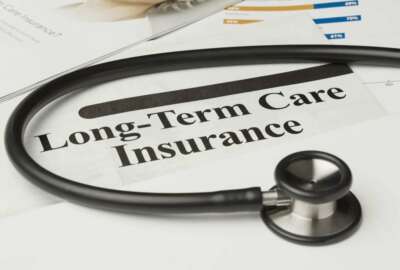
Last chance to blow $4,000!
According to the experts, many federal workers, and some retirees too, have excellent health insurance coverage. But most, thanks to the power of inertia, are...
Do you hate change, or making decisions? Is the car you are driving right now the same one you’ve owned since Jimmy Carter occupied the White House?
Are you planning to finally have air conditioning installed in your home this year? Are you waiting for vinyl records to make a total comeback? Do you tend to put things off? Or try not to think about worst-case-scenarios — like a car wreck, or major illness — because it is depressing? Or can wait maybe until the current pandemic is over?
Still not completely comfortable in the 21st century? Welcome to the club.
According to the experts, many federal workers — and some retirees too — have excellent health insurance coverage. But most, thanks to the power of inertia, are paying too much in premiums. Consumer Checkbook’s Guide to Federal Health plans says “most people can save $2,000 or more in premiums next year, if they do something between now and Dec. 14 when the health insurance hunting season ends.
The good news, if you do nothing, is that you are probably enrolled in a good plan, with your agency paying the lion’s share of the premium, that will cover you and your family nicely no matter what happens in 2021.
The not-so-good- news is that doing nothing, sticking with the health plan you’ve been in since the Carter administration, probably means you will pay too much next year for what you will get back in doctors, hospital and prescription drug coverage. Health insurance guru Walton Francis says many will lose $1,000 to $2,000 next year by paying more than they need for top-notch coverage. In some cases, he says that sticking it out with your oldie but goodie health plan means you will lay out $4,000 more than you need too.
So how do you avoid paying way too much for insurance next year? For starters, listen to our Your Turn radio show today. My guest is Walton Francis, a retired former government official who wrote the book — literally — on the various plans in the FEHBP program. He’ll be talking about how to find the best buy for you and your family. And maybe save lots of money. The show is live at 10 a.m. EST streaming here or on the radio in the Washington D.C. area at 1500 AM. The show will also be archived so you can listen again or pass it on to a friend.
Meantime Walt has prepared this checklist for you for the final days of open season.
Key points in the final days before Open Season ends (ends on December 14):
Task 1: Check to see how your existing plan fits with your health and your family’s health:
- Are your doctors going to be in the plan network next year—call their offices?
- Download the plan brochure from the plan website, the OPM website, or the Checkbook website (www.guidetohealthplans.org).
- From the plan brochure — has anything changed that will be a big problem or a big plus next year? See Section 2 on how plan changes and if you are on Medicare see Section 9 on Medicare coordination because any change in that is probably not mention in Section 2.
- Also from plan brochure—for any big medical procedure you expect next year, how good is the plan benefit? Check Section 5 or just do a search of the PDF brochure file on a key word.
Task 2: Even if you are satisfied, compare your plans to at least two or three others:
- If you have Checkbook’s Guide, used it to find two or three plans that are big money savers for families like yours. This takes about one minute once you have the Checkbook tool open.
- Otherwise, use the OPM website to look for plans with lower premiums than you are paying now. You can’t sensibly choose based on premiums alone, but they can help you find a plan that costs less and has better benefits.
- Even if you do nothing else, visit the website of the plan you are in to see if the same company offers a better plan. Most of the big carriers have four or five different plans. You may not even know that all those plans exist if you don’t pay careful attention next year.
Be sure you look at a few plans rated as good buys. Here are a handful of plans that Checkbook rates as good buys for most people with likely savings in the range of two thousand dollars a year or more: CareFirst, GEHA, and MHBP high deductible (HDHP) plans, Kaiser Basic and Standard plans, Blue Cross FEP Blue Focus, GEHA Elevate, and NALC and APWU Consumer Driven (CDHP) plans.
If you have Medicare Parts A and B, check the new Medicare Advantage options offered by United, Aetna, and Kaiser. Just go to these companies’ websites and read about the special deals they offer, including not only reducing your share of benefit costs to near zero but also rebating to you most or all of the Part B premium. What do you think of paying only ONE premium in full while getting almost free health care? Sound too good to be true? Well it isn’t in these plans.
Good Hunting!
Nearly Useless Factoid
By Alazar Moges
The longest recorded flight of a modern chicken lasted 13 seconds for a distance of just over 300 feet.
Source: HGTV
Copyright © 2025 Federal News Network. All rights reserved. This website is not intended for users located within the European Economic Area.
Mike Causey is senior correspondent for Federal News Network and writes his daily Federal Report column on federal employees’ pay, benefits and retirement.
Follow @mcauseyWFED





